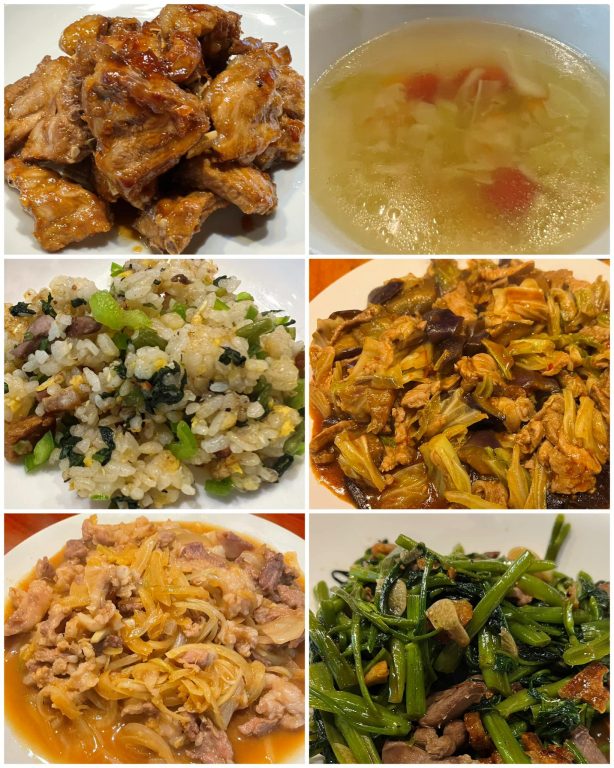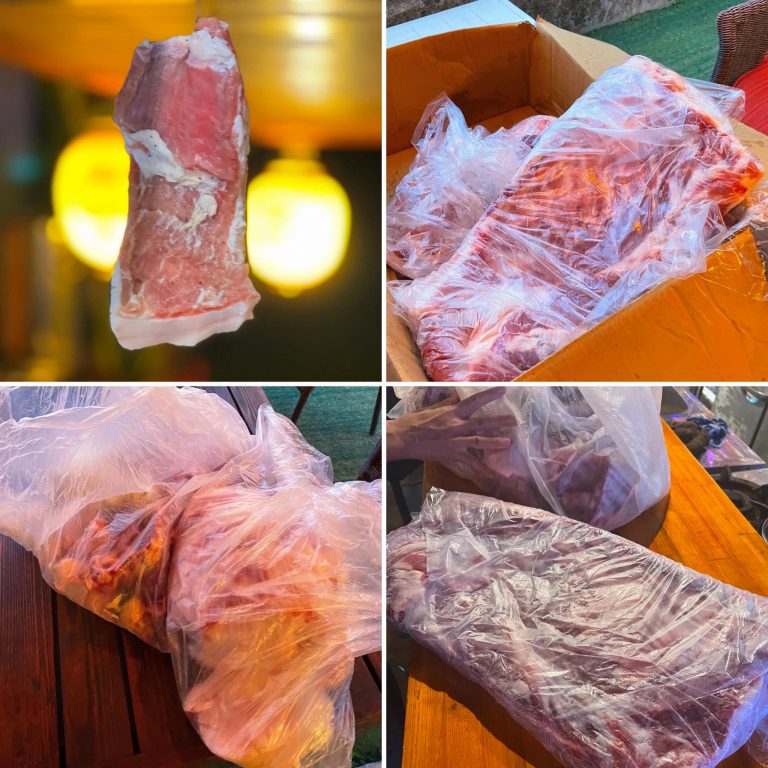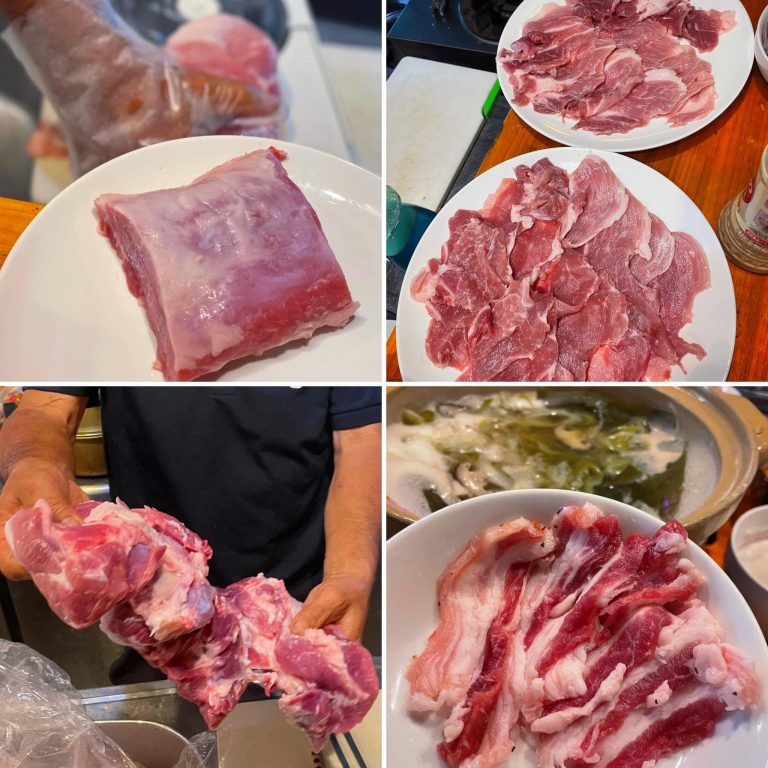Organically raised agu (Okinawan island pork) served on the half.

Organically raised agu (Okinawan island pork) served on the half.
Agu is a valuable island pig indigenous to Okinawa, and was brought to Okinawa from China around the 14th century by Kume Sanjuroku and others, who brought the pig and its cooking methods with them. It developed as a court cuisine of the Ryukyu Dynasty.
Pig farming developed dramatically with the introduction of potatoes in 1605. The peels and vines of potatoes were suitable as food for omnivorous pigs. The ease of raising pigs allowed farmers to earn cash, and by the 1700s, pig farming had spread further, and even citizens began to eat pigs at New Year’s, festivals, and other milestone occasions. Agu was a valuable source of protein and income.
Agu, an indispensable part of Okinawan cuisine, is popular in such dishes as rafte, a slow-cooked tripe stewed with sugar, soy sauce, and awamori (Okinawa rice wine); suckling fish with contents such as stomach and intestines; mimigar, thinly sliced pig ears; and tebichi, a stewed leg.
I had it processed while checking the various parts of the meat. The lard fat was taken out and made into French fries, and the spare ribs were delicious with the wonderful aroma of marmalade. And then there was fried rice, soup, and pork.
Thank goodness for agu pigs who can eat everything but the squeal!
Ah, happiness!








